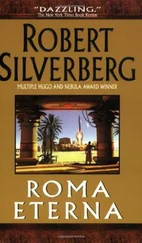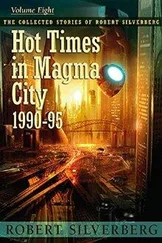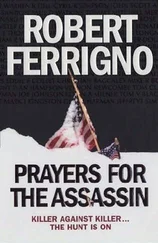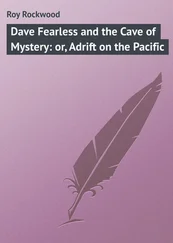“Since this is the dry season,” the islander said, “you will have no trouble in fording it.”
“It won’t be an obstacle?”
“No, it will not be an obstacle.” 7
It would be an obstacle, because it was raining this dry season and because the river was not the Ilu but the Tenaru. And because of this assurance, General Vandegrift would leave valuable bridging equipment behind.
Meanwhile, all other attempts to map Guadalcanal were meeting similar frustration. Although the Army’s 648th Engineer Topographic Battalion had obligingly put on a “red-rush” aerial photo-mapping of the island, a naval transportation officer saw to it that the finished mosaic was carefully filed at the bottom of a mounting pile of boxes in an Auckland warehouse. Vandegrift never got it. Nor did he get much help from Lieutenant Colonel Twining, who, with Major William McKean, had boarded a Flying Fortress at Port Moresby and flown over Guadalcanal. The plane had been jumped by three float Zeros over Tulagi Harbor, and Twining and McKean had understandably been more engrossed in the ensuing air battle than in Guadalcanal. They remained thus preoccupied while the Fort’s gunners sent two Zeros spinning down in flames and fought off the pursuit of the third. After the big bomber finally got back to Moresby, coming in with bone-dry tanks, all that Twining and McKean could tell Vandegrift was that the landing beaches he had selected seemed suitable. Still desperate for terrain intelligence, the general asked Admiral Ghormley to approve landing a scouting party by submarine, but Ghormley replied that this was “too dangerous.” In the end, the opening of the American counteroffensive against Japan was to be based on a map so sketchy that Archer Vandegrift might have been landing on the moon.
During the landings, Vandegrift naturally expected the support of carrier-based aircraft. But after that who would fly from the airfield which Admiral King wanted so badly? The choice fell upon Marine Air Group 23—two squadrons of fighters and two of dive-bombers—commanded by Colonel William Wallace. But this outfit was then back in Hawaii checking out on carrier landings and takeoffs. No one seemed to know how such short-range aircraft were to cross thousands of miles of water to Guadalcanal.
Supply was another headache. The ships could be loaded only with “items actually required to live and fight.” Seabags, bedrolls, tentage—hardly articles of luxury—had to be left behind. Considerable heavy equipment and motor transport was hauled off the ships and placed in storage. Bulk supply—fuel, lubricants, rations—was cut to sixty days. Ammunition was reduced from fifteen to ten days of fire. And so the work of unloading and sorting and combat-loading went forward in those cold drenching rains.
Wellington’s spacious Aotea Quay was turned into an ankle-deep marsh of tons upon tons of cereal, cigarettes, candy, and little cans of C rations, whatever had spilled out of sodden and burst containers and had been churned into a pulpy mass by the feet of thousands of toiling Marines or the wheels of flat-bedded New Zealand lorries laboriously crawling through drifts of cornflakes. Here was bedlam made more chaotic by the sense of urgency energizing all those scurrying men in tan helmets and brown ponchos, made more nightmarish by wharf lights glowing ghostly throughout mackerel day and streaming night, and more lunatic by the sound of rain striking steel decks to counterpoint, with the monotony of a monstrous metronome, the whining of winches, the shouting of bosun’s mates, and the crying of Marines warning one another of huge hooks swinging free or of trucks, slung in cargo nets like toys, rising from the holds with dangerous rapidity and falling too quickly toward the dock. There were curses, too, yells of frustration whenever Marines stumbled over C-ration cans imbedded in the mess or sharp cries of pain uttered by men tearing their flesh on rolls of barbed wire.
“Goddlemighty damn! What’n hell we need barbed wire for? I thought we were going on maneuvers.” 8
That was what they had been told. It was a necessary security precaution, and might also preclude against any of the unvaliant missing the outgoing ships. No leave was granted, of course, but almost all of the men managed to slip into Wellington to promenade the city’s quaint steep streets, to dance with New Zealand girls, to eat steak and eggs or to savor such exotic potions as rum-and-raspberry or gin-and-lemon. And as the rains continued, and order came marvelously out of chaos, General Vandegrift alerted the First Marines to stand by to transship upon arrival.
Clifton Cates commanded the First Marines. He was a man as trim as a whiplash, as suave as steel in his breeches and puttees and sun helmet, puffing calmly on a long cigarette holder with which he sometimes punctuated orders given in a pleasant Tennessee drawl. Colonel Cates was an Old China Hand who had fought in France in World War I. He had been wounded twice, gassed once, and had won seven medals for bravery. Having commanded a platoon, a company, and a battalion in battle, he now had this regiment—and he was both worried and enraged about it.
Colonel Cates was enraged because the ship John Ericsson carrying most of his men was little better than an African slaver. If Cates had had the power he would have put the ship’s owner and her master in their own brig and let them rot on what they fed the troops: spoiled meat, rancid butter, and rotten eggs without an ounce of fresh food.
John Ericsson stank like a floating head. Hundreds of nauseated men thronged her leeward rails and those who could not retch over the side vomited into their steel battle helmets. The heads belowdecks reeked like open cesspools. Men devoured by dysentery waited outside the heads in long lines; men who could not get to them in time also used their helmets. The war was just beginning and the profiteer was already battening on American misery like a leech sucking blood.
The worries which nagged Colonel Cates were of a less infuriating nature. He was concerned that the men might be going stale. From San Francisco to Wellington was a voyage of about three weeks, and that was time enough to soften muscles only recently hardened by a few months of training. The men were idle and bored. Either they played cards or lounged on top of covered hatches, sunning themselves and “batting the breeze,” or they lined the gunwales to watch the flying fish or stare vacantly into white wakes boiling off the fantails, their minds thousands of miles eastward among the scenes of childhood.
On some of the less crowded ships it was possible to organize calisthenics, and aboard the George F. Elliott the men of Cates’s Second Battalion held boxing matches.
Indian Johnny Rivers was frequently in the ring. He sparred lightly with his opponents, careful not to hit them too hard. But one day, as the convoy and its escort of circling warships plowed through the blue Pacific, Johnny Rivers heard his friend Al Schmid yelling, “Your right, Johnny—use your right!”
Rivers swung his right.
His opponent stiffened and his eyes became glassy and his knees buckled.
Rivers came back to his corner, ruefully shaking his head. “What’s the idea, Smitty? I didn’t want to hit him with my right.” Then the irrepressible Rivers grinned. “Boy, I sure hit him though, didn’t I?” 9
So the men of the First Marines sailed on toward New Zealand, and far behind them came the men of the Second Marines under the formidable protection of the aircraft carrier Wasp . This great ship which Winston Churchill had hailed as the savior of Malta had been rushed from the Atlantic to the Pacific to escort this borrowed regiment to the First Marine Division’s rendezvous area in the Fijis.
Читать дальше












